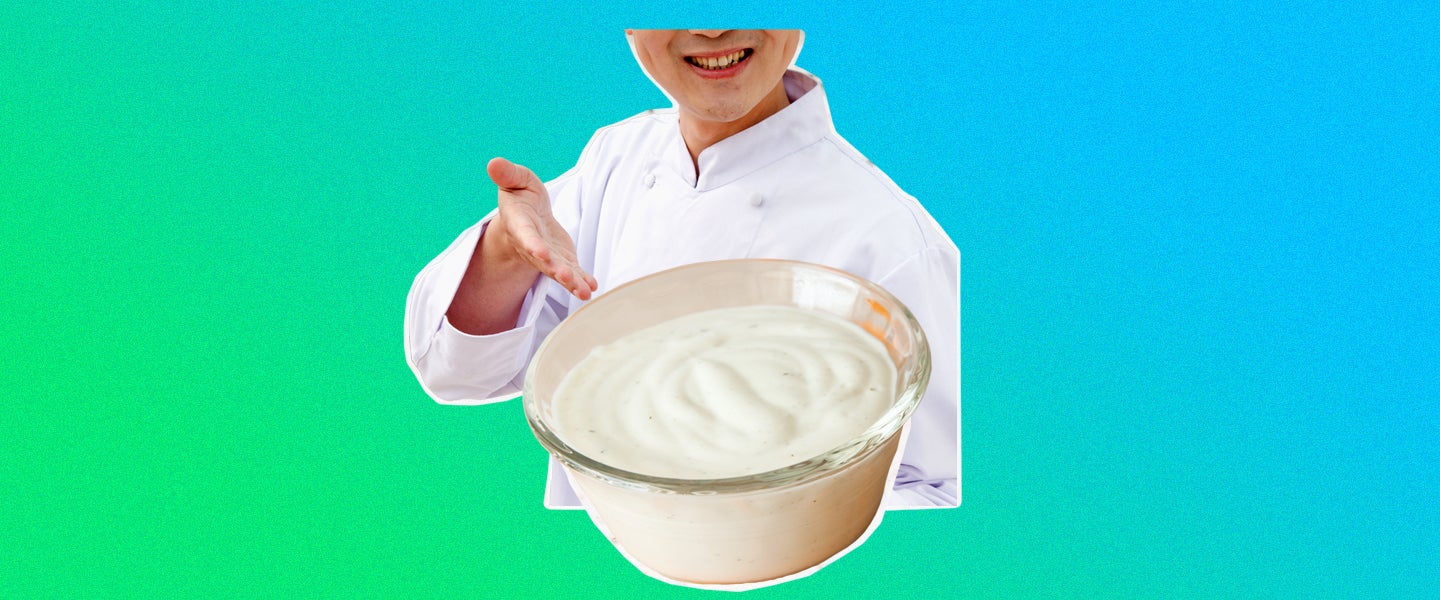I probably don’t need to explain that one of the main reasons people go to restaurants is because the food tastes better than they could make at home. But sometimes, this flavor disparity is just an illusion: You want to think the food tastes better than your own cooking because you’re paying a premium to have a professional prepare it, when in reality, the restaurant is serving up the same shit you could buy at the grocery store.
One frequent culprit behind this bamboozlement is the beloved ranch dressing. “Unless they specifically say ‘and all our sauces are in-house,’ they’re McDonald’s business model high-fructose-style versions,” says Noah, 23, a server in Massachusetts. “The same goes for ketchup. It’s not even Hunt’s or Heinz, it’ll be like, Kroger store brand.”
Even the restaurants that do make their own dressings might be serving up Hidden Valley, depending on how loosely you interpret the term “make.” “We literally use Hidden Valley ranch packets to make ours,” says Madelyn, a server in Oklahoma.
So why, then, does the stuff in the restaurant — the stuff that’s almost certainly just been whisked up from a packet of Hidden Valley — taste better than the bottled stuff? Turns out, there’s more to it than just wanting to convince yourself that it’s worth it to eat out. While the packets are primarily salt, powdered buttermilk and some herbs, they’re intended to be mixed with milk, sour cream or mayo. Ultimately, this isn’t too different from the required ingredients for making ranch dressing from scratch.
The key difference between this mix and the ingredients in bottled ranch comes down to that dairy base. The majority of bottled ranches are comprised primarily of vegetable oil — while there’s also some egg and other dairy, the quantities are much smaller than that of the homemade kind.
“Often, [restaurants] do use Hidden Valley packets, but then add stuff that’s not in the store-bought stuff,” says Jessie, a former chef of 20 years. “For example, most places I worked at, the ranch is basically mayo, buttermilk and a ranch seasoning packet as the generic base. Then just add black pepper, chopped up chipotles, a bit of molasses and boom, all of a sudden it’s fantastic.”
So yeah, even if a restaurant is using a Hidden Valley packet, it’s probably genuinely better than the ranch you have in your fridge right now.
Also worth considering: Hidden Valley is often cited as the original creator of ranch dressing, and presumably, those packets offer some resemblance to ranch in its purest form. As the story is relayed on the Hidden Valley website, the dressing was created by cowboy Steve Henson upon buying a 120-acre dude ranch outside of Santa Barbara, California, in 1954. After decades of experimenting with homemade salad dressings (because what else would you do on a 120-acre dude ranch?), his ranch dressing became such a hit with neighbors and friends that it ended up hitting supermarket shelves by the 1980s.
Which is a cute story! However, there’s some evidence that cowboys were making buttermilk-based dressings for decades before Henson took the credit for it. Regardless of its origin, ranch is now a billion dollar industry — $150 million bigger than ketchup, in fact — and like it or not, ranch dressing has become synonymous with American identity. Literally: In parts of Europe, “cool ranch” flavored Doritos are instead called “cool American.”
Frankly, if we’re going to perpetuate our own stereotype, we should at least make sure we’re consuming the real buttercream kind.

